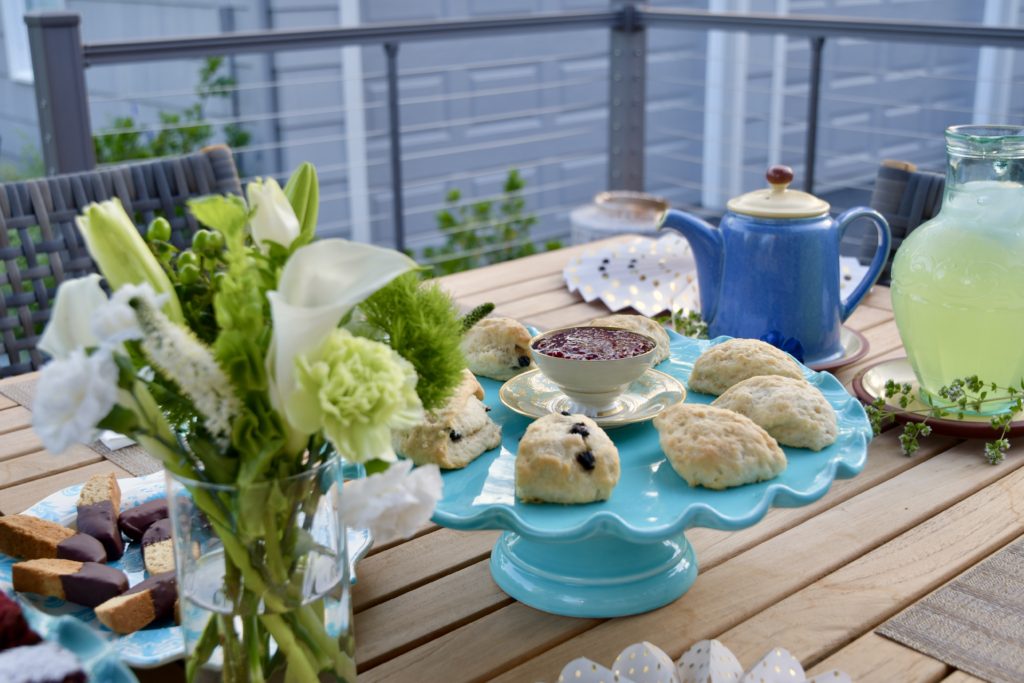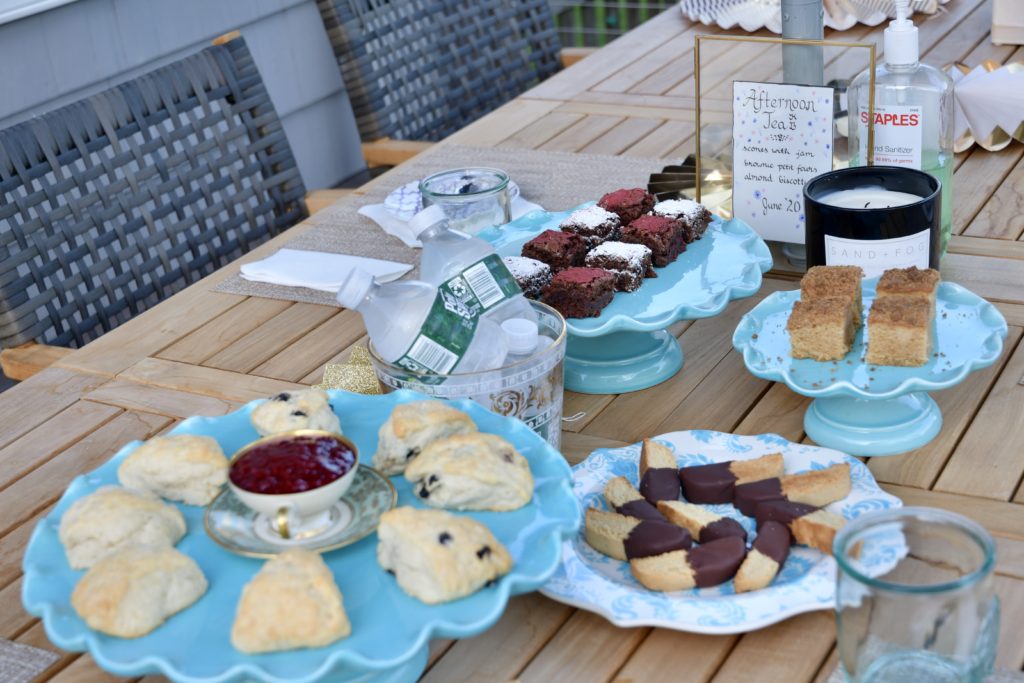Amidst coronavirus, I’m sticking to what I – and a lot of other people – love most: cooking and baking. One challenge I’ve presented to myself is to make a dish (or dishes) of international cuisines every week, learn some words from the language, and e-visit some of the country’s landmarks. Some of these dishes will be more complex than others, based on what ingredients I have available in the house.

About a year ago, I went to London for the first time and completely fell in love with the city. Now, it’s time to re-visit the country. I’m chuffed to bits – let’s go!
I’ve definitely got a taste of British culture. Since I was in middle school, I’ve probably watched more British shows than American ones: Downton Abbey, Broadchurch, Victoria, The Crown, Call the Midwife, Sherlock, Million Pound Menu, and of course, The Great British Baking Show.
I mean, Mary Berry? Prue? Paul? Absolutely brilliant. What I loved about the show was the calm, collected camaraderie between the contestants and how the show offered a chance to learn more about new baked goods and techniques.
Some traditional British meals include fish and chips, English breakfast, steak and kidney pie, Yorkshire pudding, Victoria sponge cake, and more. After seeing the new version of Little Women, I stumbled upon this video of Florence Pugh (who plays Amy March) eating 11 English dishes, which I thought was a fun way to learn more about traditional dishes.
Aside from the typical puddings and pies, British cuisine has absorbed some other cuisines, such as Indian cuisine from their colonialism. One of the well-known Anglo-Indian foods is chutney.
For my birthday, I decided to invite a couple friends over for a dessert-only afternoon tea inspired get together. Below was my birthday menu:
Afternoon Tea Menu
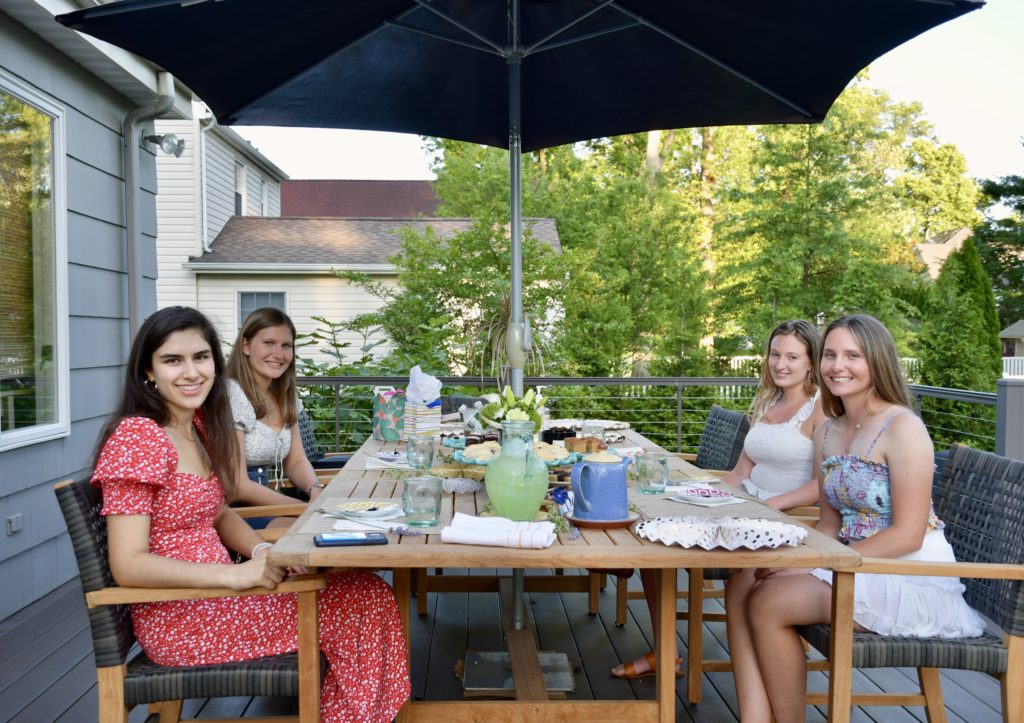
1. (TWO TYPES OF) SCONES AND JAM (GF + V)
Scones – pronounced as ‘skon’ or ‘skoan’ – are up there as one of my favorite desserts. Scones are believed to have originated in Scotland and were first made with oats. The typical scone is made with flour, little sugar, baking powder/soda, butter, milk (whole, buttermilk, or heavy cream), and occasionally eggs. British scones often include raisins, sultanas, or currants as well. Scones can be made as drop scones, triangular, or circular.
SCONE #1: I made this scone pre-birthday, so I didn’t have all my ingredients lined up. I would have made my proper Claridge scone or date walnut scone recipe, but since I didn’t have my typical gluten-free flours (like brown rice, potato starch, etc.), I used a gluten-free biscuit mix and followed my Claridge recipe. End result: tasted like scones, but didn’t necessarily look like them.
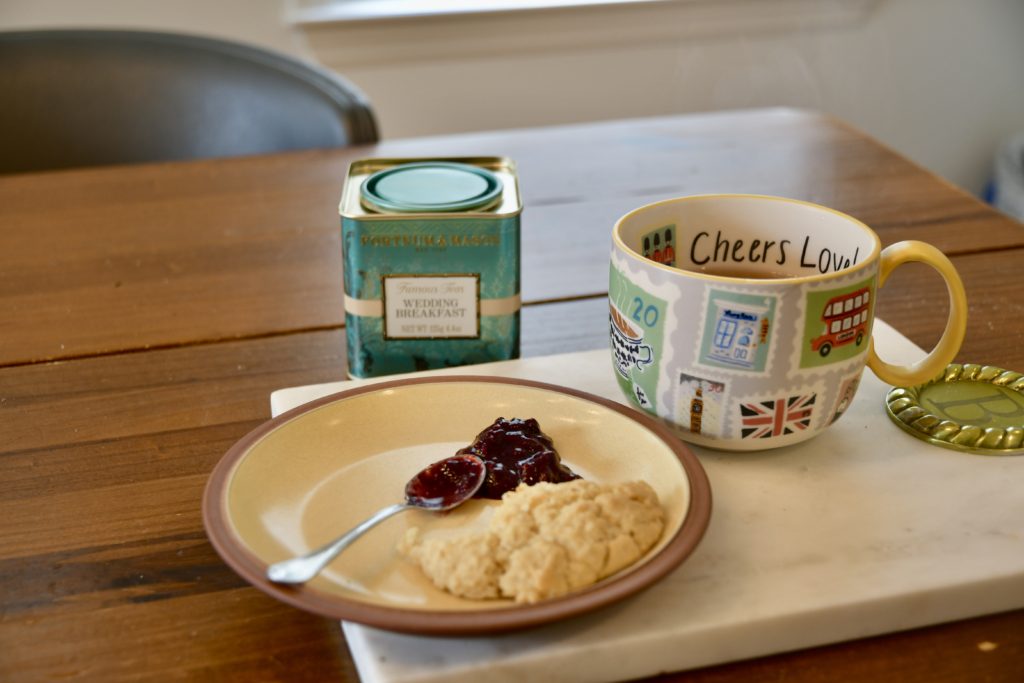
Scone #1 recipe: Claridge’s scones
SCONE #2: For my birthday, I made coconut scones, by using Serious Eats’ lemon blueberry scone recipe. This recipe is naturally vegan which is a plus! It wasn’t as flavorful as Claridge’s recipe, but I was in the mood to try something different. You can use King Arthur’s Gluten-Free Measure for Measure Flour as an all-purpose flour substitute.
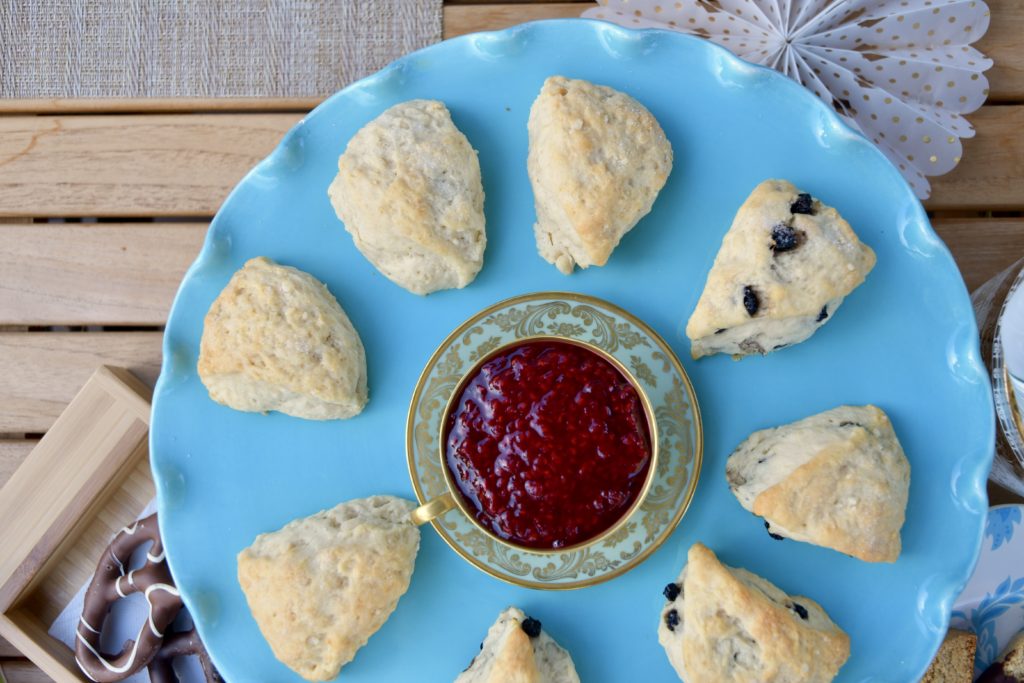
Scone #2 recipe: Serious Eats’ Blueberry-Lemon Scones
- Note: I was hoping this recipe would be more flavorful with the coconut milk and coconut oil, but Claridge’s recipe still remains my favorite.
Scones are typically served with jam, jelly, butter, and/or clotted cream. Clotted cream is a thick cream made by indirectly heating up heavy cream.
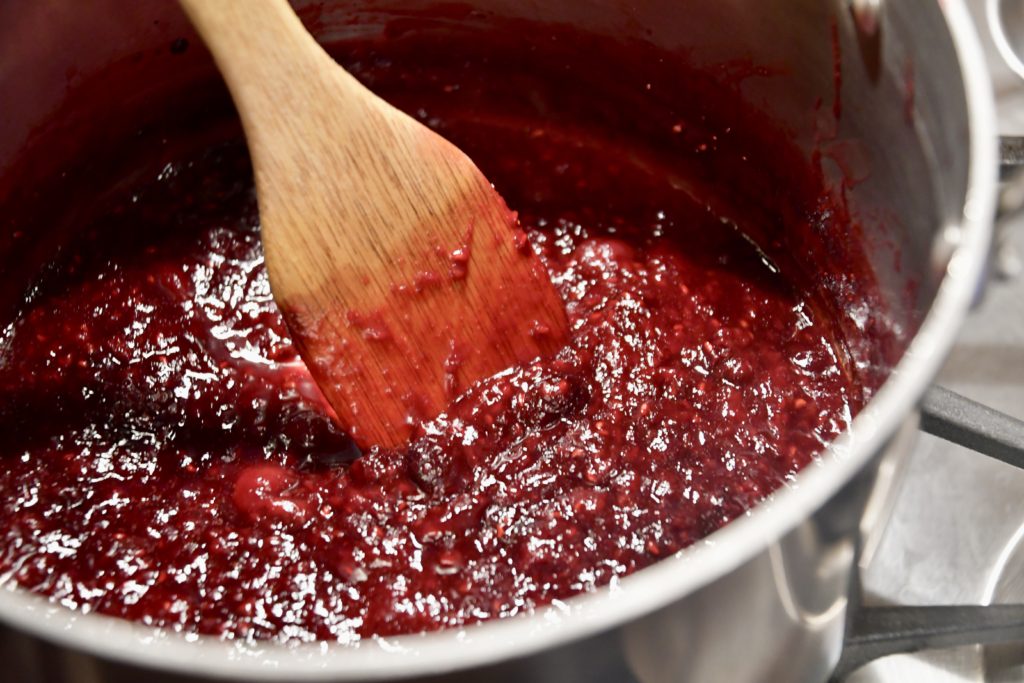
Like everything homemade, I’ve realized that homemade jam is far better than store-bought jam. I had bags of frozen mixed berries, so I decided to make a super quick, pectin-free jam requiring only three ingredients: berries, sugar, and lemon juice. However, if you’re not into making homemade jam, I loved Wilkson & Sons’ raspberry jam when I stayed in my London hotel. It was my gateway jam, if you will 🙂
Jam recipe: NYT’s Any Fruit Jam
- Notes: I followed this recipe and didn’t use the vinegar, but upped the lemon juice because I like a more tarty jam.
- Decorative tip: A couple years ago, my mom bought me vintage tea cups, so I just served my jam in them. Etsy has many vintage tea cups you can purchase.
2. BROWNIE PETIT FOURS (GF + DF)
Almost every afternoon tea has some form of petit fours. Petit fours, or “small oven” in French, are small bite-sized sweets. They’re typically layered with a sponge and cream, and covered with a type of icing. There are three varieties:
- Glacé, which are tiny cakes glazed in a fondant or icing
- Salé, which are savory appetizers
- Sec, which are dried sweets, like biscuits, meringues, macarons, etc.
Instead of covering these brownies in chocolate or a certain icing, I decided to powder confectioner’s sugar and beetroot powder on them, and arranged them in a checkerboard fashion.
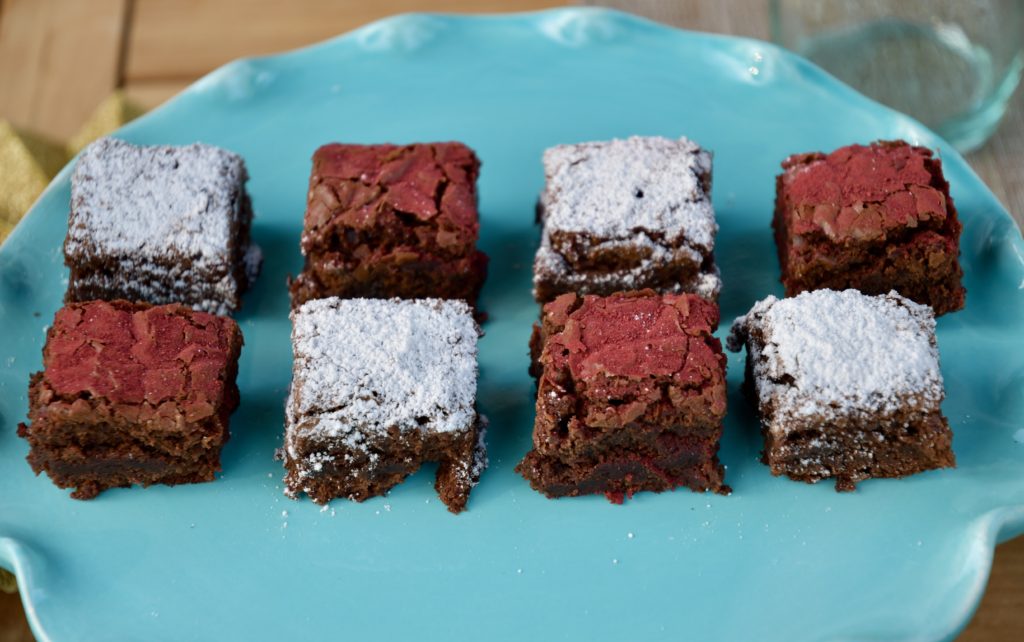
My personal favorite brownie recipe is my black bean brownie recipe, but in case my friends may be less inclined, I used King Arthur’s gluten-free brownie mix.
3. CHOCOLATE DIPPED ALMOND BISCOTTI (GF + V + RFS)
An afternoon tea is incomplete without some type of cookie – shortbread, jam, lemon. I decided to do almond biscotti and dipped them in Equal Exchange’s Organic Chocolate Chips. If you skip the chocolate step, these cookies are refined-sugar free. An Italian tip for biscotti is to add a touch of nutmeg and some orange zest.
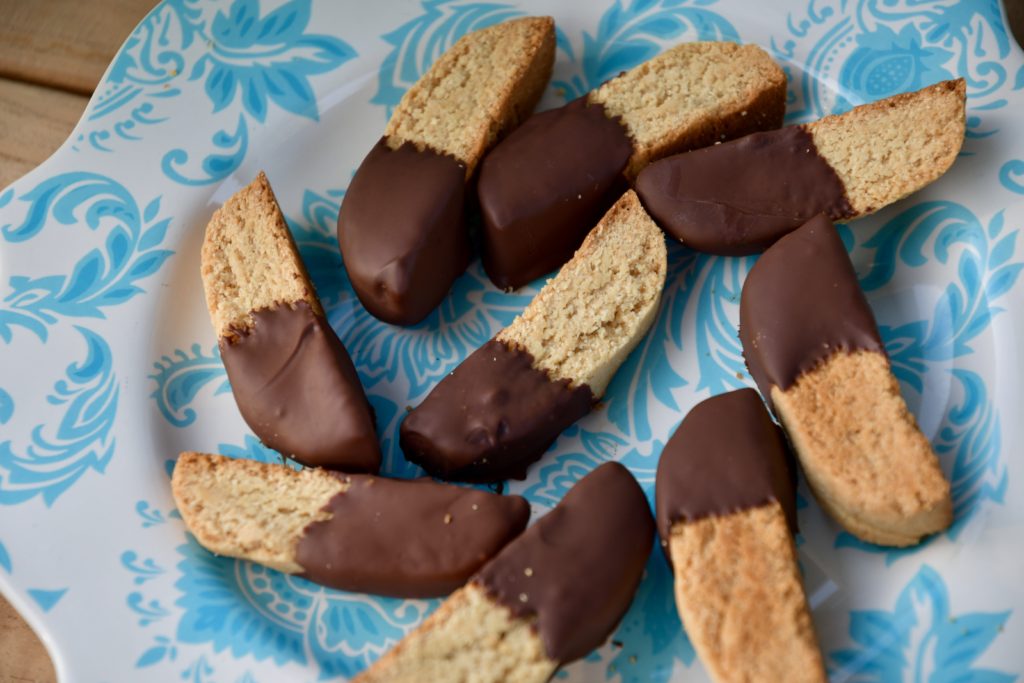
Recipe: Chloe Coscarelli’s vegan almond biscotti
- Note: I used a gluten-free all-purpose flour and it turned out well.
MY CUP(S) OF TEA
I am a tea aficionado – my cousin always jokes that whenever he comes to visit me, I’m always sipping tea.
A tea tip I learned at Claridge’s: sandwiches go with green/white tea, scones and pastries go with black tea, and you finish off with a herbal tea.
Below, I’ve listed some of my favorite tea blends.
- Green tea
- Black tea
- Herbal tea
If you’re more of a coffee-and-dessert person, I recommend Counter Culture’s Forty-six coffee.
USEFUL WORDS
Americans and British obviously both speak English, but what are some areas where we differ?
For one, words like color, are changed to colour. Theater becomes theatre.
Other words do a swap as well:
- Football = soccer
- Queue = line
- Vacation = holiday
- Flat = apartment
- University, uni = college
- Jumper = sweater
- Underground = subway
- Lift = elevator
British slang
- Bloke = a man
- Gobsmacked = utterly awestruck in amazement
- Gutted = incredibly upset about something
- Not my cup of tea = Not my thing
- Blimey! = expressing surprise
- Chuffed = expression of pride of your own actions or achievements, excited
LANDMARKS
I could probably list 20 landmarks in London alone – but I won’t. Here’s a list of some of the top landmarks all around England.
Stonehenge, Wiltshire

Stonehenge is a prehistoric monument, with the stones dating back to around 3100 BC. The formation of today is thought to have been created between 1930 and 1600 BC. After finding cremated remains of 50,000 bones at the sit, some archaeologists believe that this may have been a burial ground.
Roman Baths, Bath

This temple was constructed between 60-70 CE on top of hot springs. The floors of the baths were heated through circulating hot air under the floors, otherwise known as a hypocaust.
Buckingham Palace, London

Buckingham Palace is the London residence of the monarchy. Queen Victoria was the first English royal to live in the 775-room “house”. It’s not just Queen Elizabeth and her family who live there, but also over 800 staff workers.
Oxford University, Oxford

Oxford University was established around the 11th century and is home to one of the best punctuation tools ever: the Oxford comma, of course. Contrary to what I originally thought, Oxford University is actually made up of more than 30 different colleges.

I hope you’ve enjoyed this little tour of England as much as I have. Cheerio!
